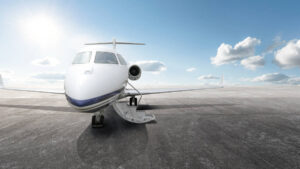Freedom! Aussies plan to spend $$ on restaurants, holidays, manicures

Pic: Stevica Mrdja / EyeEm / EyeEm via Getty Images
Bored Australians caused sales to surge for ASX homewares stocks but the outlook for the rest of the year is sketchy, if our spending intentions are anything to go by.
Once Aussies are free from lockdown, they told the Australian Bureau of Statistics (ABS) they plan to hit the restaurant circuit and spend their savings on “recreational activities”.
Personal care is also high on the list of treats Australians plan to spend on, as hair and nail salons cope with the backlog of pent up demand.
However, deliveries of activewear, shoes, and home furnishings may dive: those who weren’t indulging in retail therapy between March and June say they won’t open their wallets just because lockdown is over.
More than half are planning to go on a domestic holiday with the majority of us desperate to get out within the next six months — which is likely to be a good sign for what’s left of Australia’s airline industry, but maybe not for the travel agent sector where bad memories of COVID-19 cancellations are still fresh.
Less than a third are planning an international holiday but those hopes may be dashed: the ABS’s sixth Household Impacts of COVID-19 Survey was conducted in mid-June, before the government confirmed that no, borders are unlikely to open before July next year.
Of the optimistic international travellers surveyed by the ABS, 44 per cent hoped to be jetting off within six to 12 months. About a third reckoned it’d be closer to 12 months or longer before they see foreign lands again.
“This survey showed us a mixed picture of what Australians plan to spend their money on once restrictions ease,” said ABS head of household surveys Michelle Marquardt.
“Many Australians reported decreased spending on eating out (87 per cent), child care fees (85 per cent), recreation or leisure (79 per cent), public transport (73 per cent) and personal care (64 per cent).
“Of these people, a majority expected to increase their spending on recreational activities (74 per cent), eating out (74 per cent), private transport (73 per cent), personal care (70 per cent), childcare (66 per cent) and public transport (55 per cent).
“On the other hand, the majority of Australians who had reduced expenditure on household furnishings (72 per cent) and clothing and footwear (52 per cent) expected to continue to spend lower amounts on these items as COVID-19 restrictions ease.”
UNLOCK INSIGHTS
Discover the untold stories of emerging ASX stocks.
Daily news and expert analysis, it's free to subscribe.
By proceeding, you confirm you understand that we handle personal information in accordance with our Privacy Policy.








